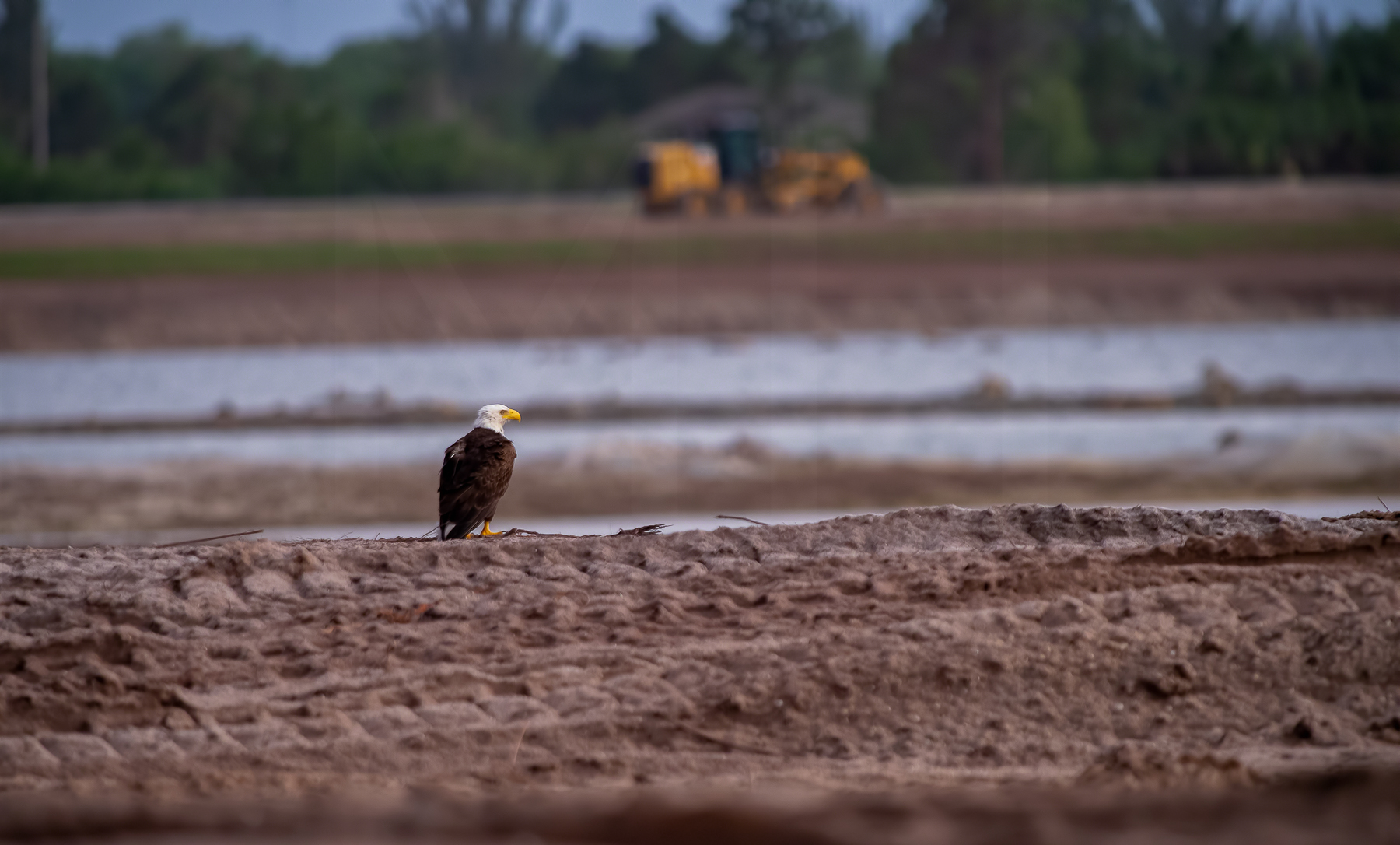4/30/2019

Written by: Alison Drake/Marc Harris Wildlife
Marc Harris Wildlife Photograph of a mature bald eagle looking over a current development ground that was a big lake he used to frequent regularly to eat, drink, bathe and unwind with his mate.
Marc and I are very familiar with this eagle. We believe he lost his mate during a well known, horrendous prescribed burn gone bad when the tree that housed their tremendously large nest went up in flames during breeding season in 2018. His mate, the female, along with one unfledged juvenile eagle were never to be seen again. The male and an older fledgling who survived stayed around the nest area for days but eventually left their home area for good. All that's left of the once beautiful nest is just some scorched twigs. (See blog titled "Fire and Loss" 4/2018)
The mostly inseparable mated pair spent years hanging out in the once lakeside area depicted in this photo. We saw them together as they rested undisturbed at their favorite stopover, and flying back and forth from their nest after long days of hunting and doing their daytime eagle things. We would watch them perch together on the branches of a tree once located near where you see him now. He has suffered losses in the past year, his home, his mate and now his lakeside retreat.
He flies alone this year.
It will be next to impossible to document his life going forward since his home and daytime patterns of existence, no longer exist. When he finds a new mate we will have no idea where they will make their new home and now he will not be able to bring her to his old lake.
We wish him well in his new life and hope he finds a new love and a safe place to start a new lifetime of families.
So long Sir.
Facts: The primary cause of loss of habitat is the clearing of land. The loss of wetlands, plains, lakes and other natural environments all destroy or degrade habitat. Habitat loss is a process of environmental change in which a natural habitat is rendered functionally unable to support the species that are present or in surrounding food gathering areas. In the process of habitat destruction, the organisms that previously used the site are displaced or destroyed, reducing biodiversity. Destruction causes instant harm to habitats and kills many species in the process.
How can we help prevent habitat destruction? For one: before building on a piece of property, learn about the natural habitat that will be impacted. There are always options to leave protected areas and sensitive ecosystems on the land to allow the wildlife to remain there for your enjoyment and their survival.
We live in southwest Florida, a state that currently has an influx of 1000 people a day moving here. According to the Florida Fish and Wildlife Conservation Commission (the FWC), if Florida's population doubles during the next five decades it is predicted that about 7 million additional acres of land could be converted from rural and natural to urbanization. Of that, 2.7 million acres of native habitat will be claimed by roads, shopping malls and subdivisions. The addition of 18 million new residents to Florida alone will be a competition between wildlife and humans for land and water resources. In summary, the animals and fish that currently live in these habitats will disappear.
Marc and I are assisting the Cape Coral Wildlife Trust on their advisory panel as they move to acquire and protect large and small parcels of land for conservation of the burrowing owl and the gopher tortoise. We could use everyones help in this endeavor. We will keep you posted as these plans are put in place.
Research: FWC and National Wildlife Federation